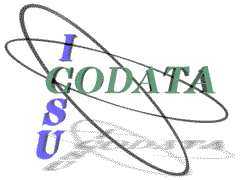Senckenberg Research Institute and Museum, Frankfurt
Botanical Garden and Botanical Museum Berlin-Dahlem
Senckenberg Research Institute and Museum, Frankfurt |
Botanical Garden and Botanical Museum Berlin-Dahlem |
TDWG 2000: Digitising Biological Collections
Taxonomic Databases Working Group, 16th Annual Meeting
Senckenberg Museum, Frankfurt, Germany, November 10-12, 2000
* Department of Biodiversity Informatics, Botanic Garden and Botanical Museum Berlin-Dahlem, Königin-Luise-Str. 6-8, 14195 Berlin, Germany
[Presentation]
The BGBM started an imaging project for herbarium specimens to ease access to the information contained in the herbarium and to allow researchers to pre-process ("virtual") specimens before requesting actual ("physical") loans - which are not only expensive to process but also imply a considerable risk for the valuable material. Having contemplated the idea for several years, we hope that now we can produce images of a quality, which will continue to be of service in the future even when surpassed by newer techniques.
To digitise specimens, a PRACTICA Scan 2000 camera is used. It produces pictures with a resolution of 3648 x 4625 pixel (24 bit colour), with a resulting uncompressed TIFF file of about 48 MB in size. Data are transferred via an SCSI II interface to a Windows 2000 PC, where they are processed using Silverfast and Photoshop software. The images are stored locally using the barcode as the filename. A batch process later transfers them to a raid system on the network.
Over all, current average processing time for a single sheet amounts to about 6 minutes. This includes material transfer from and to the herbarium, taking the picture (actually a scan process), data transfer from camera to computer, loading, control and brief editing of the image, additional information capture, file operations, and occasional error correction.
Currently, we are primarily digitising specimens in answer to loan requests, which are served via the World Wide Web with compressed JPEG files of around 1 MB for each specimen. During picture acquisition, data capture is restricted to the barcode, the name the sheet is stored under, and (where possible) the present country of the site where the collection took place.
Conventionally, serving pictures over the WWW involves transfer of the entire file. Serving high-resolution pictures for viewing via the WWW is therefore currently not practical, even if the images are optimally compressed. To overcome this dilemma, we currently evaluate the software MGI Zoom-Server, which uses the "Flashpix" format. This proprietary software allows processing of the image on the server, according to requests from any WWW browser. Only the data needed for the actual size of the picture on the client's screen are transmitted. First tests with this technology are very promising. A sample can be viewed under http://www.bgbm.org/BioDivInf/Projects/FlashPixExample.htm.
TDWG | Participants | Presentations | Senckenberg Museum | BGBM Biodiversity Informatics
|
This meeting was co-sponsored by the Committee on Data for Science and Technology (CODATA) |
 |
Page editor: W. Berendsohn, wgb@zedat.fu-berlin.de. © BGBM 2000.